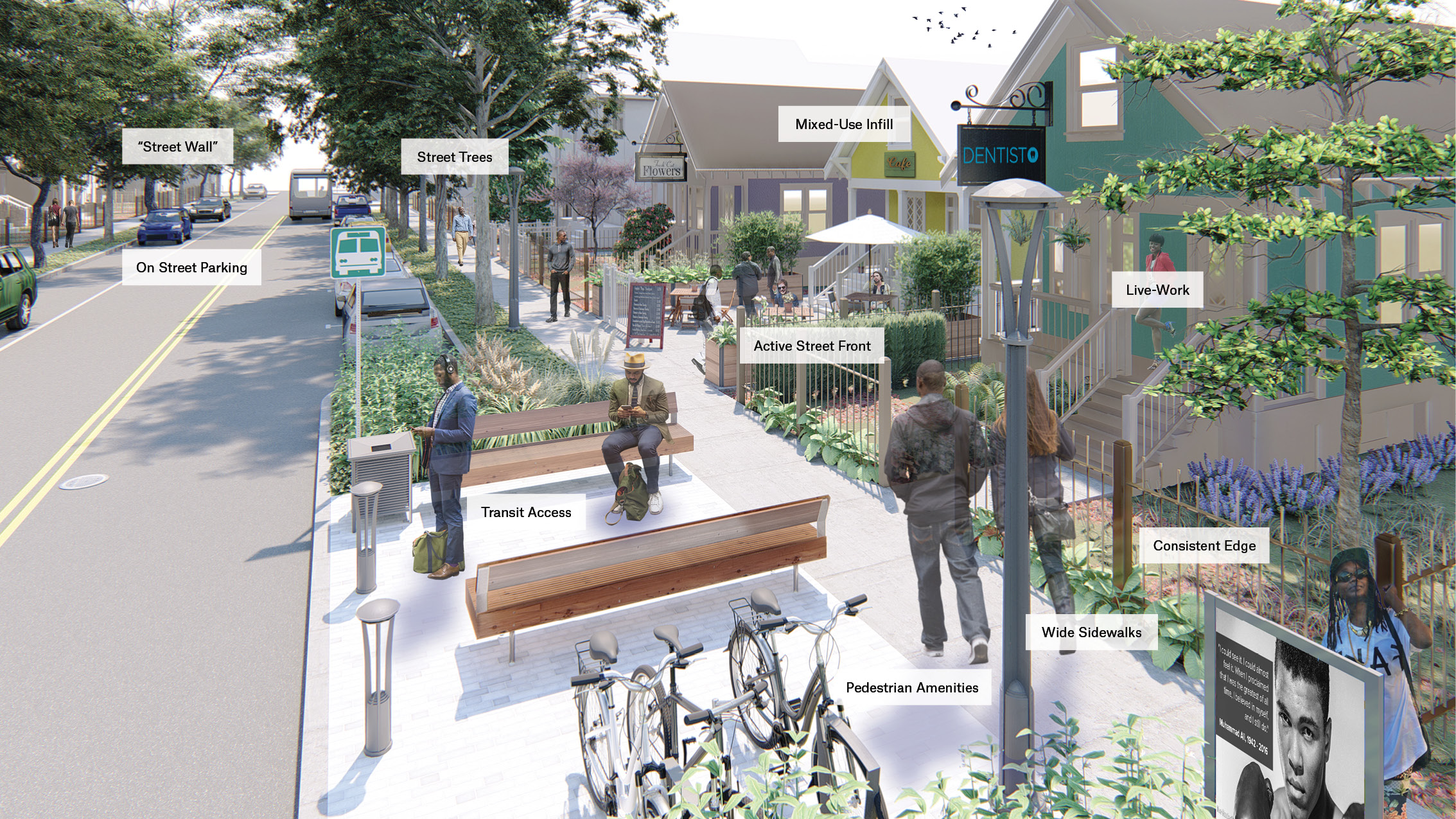During the 1940s and ‘50s, Walnut Street, now Muhammad Ali Boulevard, was the center of African-American culture and economy in Louisville. Referred to as “Louisville’s Harlem,” the vibrant business and entertainment district was alive with restaurants, nightclubs, theaters, homes and retail establishments. Sadly, most of what Louisville’s Russell neighborhood celebrated was erased due to urban renewal during the 1960s.
Gresham Smith helped Louisville Central Community Center (LCCC) solidify their ideas for revitalizing this once-flourishing corridor into a master plan document—THE BLVD (Boulevard) Corridor Study & Design Guidelines. Serving as a voice for LCCC and the local community, the master plan establishes a strategic vision and framework for the Muhammad Ali Boulevard corridor to make sure the overarching vision for a creative, vibrant and historically sensitive corridor remains intact as new development arises.
mile, mixed-use development
districts
master plan document
Asset-Rich
Although urban renewal put a wrecking ball to African-American businesses, restaurants and nightclubs, the corridor still possesses rich assets that begin with the people and institutions who are passionate about bringing back the vibrancy that Walnut Street once enjoyed in its heyday.Bringing Back What Was Lost
Our multidisciplinary team of urban designers, landscape architects and engineers worked with community leaders, stakeholders and local entities to develop a corridor-wide concept plan for THE BLVD. The plan focused on creating a lively, world-class public space that will not only encourage economic development but also bring back the identity of this historic downtown neighborhood. In addition to more traditional public workshops, we engaged the community through on-site walking and biking tours of the neighborhood to make sure their voice was heard, understood, and ultimately included in the conceptual vision for the corridor.A Context-Sensitive Design Concept
Louisville Central Community Center’s effort to reinvest in the historic neighborhood began with the corridor study performed by Gresham Smith. Out of the study came THE BLVD, envisioned as a 1.5 mile, mixed-use commercial, residential and public space development. Based on existing conditions, we developed THE BLVD as three subdistricts—The Gardens District, The Walnut District and The Heritage District. The design guidelines focused on defining expectations for the right-of-way along the corridor, ensuring THE BLVD serves as a catalyst for cohesive redevelopment that is sensitive to the local community, the Russell Historic District and West Louisville, including current and historic contexts.Instilling Vibrancy
Named after the 6,000-seat Louisville arena built in 1905, The Gardens represents an injection of vibrancy into an area that has essentially become a void within the high-density Central Business District.Encouraging Reuse & Redevelopment
The Walnut District includes planned improvements expected to attract opportunities such as the adaptive reuse of the former Porter Paints factory, new connections and programming through Central High School and Coleridge Taylor Elementary, and the potential redevelopment of Louisville’s City View Park Apartments.Paying Homage to Heritage
The Heritage District falls within the existing Russell Historic District. The area contains several vacant lots that were formerly single-family homes as well as a number of established churches and institutions. It encompasses the intersection of 18th and Muhammad Ali Boulevard—an important node consisting of mixed uses that includes the Kentucky Center for African American Heritage.Doing Muhammad Ali Proud
Extending from 5th to 22nd streets, this planning effort along Muhammad Ali Boulevard is already gathering momentum with the City and developers, setting the stage for a renaissance in what was once the cornerstone of Louisville’s African-American Community.Project Contact
Our team designs with genuine care for ingenious solutions.
















